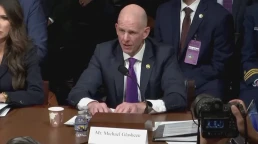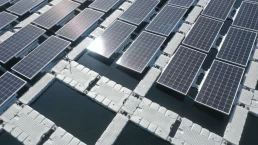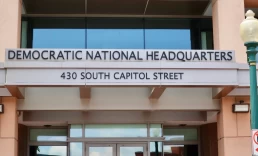By Ryan Black
Despite a global climate emergency that worsens year after year, multinational corporations continue to invest in fossil fuels and build risky oil pipelines across the country — all for private profit and at the expense of vulnerable communities and tribal lands.
Right now, as with Keystone XL and DAPL before, resisters of the Line 3 pipeline in Minnesota are facing the brutal realities of trying to stop a pipeline before the oil leaks onto their land and into their water. News media have largely ignored the over 800 arrests, giving tacit aid to the corporations that will profit from the environmental destruction. But these pipelines shouldn’t be ignored, and the arguments in favor of them should be debunked.
Here are several reasons why pipelines are bad, actually.
Pipelines Always Spill
Proponents say they’re safe. But since 2010, there have been more than 1,650 individual pipeline leaks in the United States, totaling more than 11.5 million gallons of spilled oil.
In 2016, only 150 miles away from nonviolent demonstrations against the construction of the Dakota Access pipeline, the True Cos’s Belle Fourche pipeline cracked, leaking more than 176,000 gallons of oil into a creek, emphatically highlighting the arguments the DAPL protestors were making then and that Line 3 resistors are making now.
Worse yet, there seem to be few repercussions to failure. In July of 2010, a pipeline operated by Enbridge, a Canadian multinational corporation, leaked over one million gallons of crude oil into the Kalamazoo River and its surrounding areas. Today, that very same company is in charge of building the Line 3 pipeline — an effort that is being strongly opposed by indigenous communities, climate activists, and anti-militarism groups.
Pipelines Don’t Create Permanent Jobs
The argument that Keystone XL and other pipeline projects would create jobs has always been flimsy. In reality, the State Department admitted that the Keystone XL pipeline would only create 35 permanent jobs.
“Once the proposed project enters service, operations would require an estimated 50 total employees: 35 permanent employees and 15 temporary contractors,” the State Department wrote.
While building pipelines may create short-term jobs, few long-term employment opportunities remain once the work is complete. Plus, don’t pipelines replace the truck driver and rail jobs that would otherwise be engaged in delivery?
Pipelines Trample Indigenous Treaty Rights
Fracking, coal burning and pipeline projects all trample indigenous treaty rights. They often lead to loss of indigenous land and oil leaks into water supplies. Pipelines are also known to leak and contaminate traditional indigenous food supplies.
When Joe Biden rescinded the permits for the Keystone XL pipeline, indigenous leaders felt validated.
Dallas Goldtooth, a member of the Mdewakanton Dakota and Dine nations and a Keep It In The Ground campaign organizer for the Indigenous Environmental Network, said: “This is a vindication of 10 years defending our waters and treaty rights from this tar sands carbon bomb. I applaud President Biden for recognizing how dangerous KXL is for our communities and climate, and I look forward to similar executive action to stop DAPL and Line 3 based on those very same dangers.”
Pipelines Exacerbate Climate Change
It was widely agreed in progressive and scientific circles that pipelines like Line 3 and Keystone XL would make climate change worse. It was suspected that the Keystone pipeline would boost global carbon dioxide emissions by up to 110 million tons per year.
The logic is simple. More oil being refined means more oil burning that releases greenhouse gasses into the atmosphere. The current Line 3 pipeline can move 390,000 barrels of oil per day. The new pipeline would be able to transfer 760,000 barrels per day, nearly doubling the capacity.
While there are various estimates on how much greenhouse gas, exactly, would be generated by the new Line 3 pipeline, it would certainly be a significant contributor.
According to MPR News, the Environmental Impact Statement from the Minnesota Department of Commerce (which assumes oil consumption will decrease over time) says the project would annually add 193 million tons of carbon dioxide (CO2) to the atmosphere. That is as much as a dozen of the country’s largest coal-fired power plants emit in a year.
Stop Building Pipelines
Pipelines aren’t the future of energy. Not if we want to leave a liveable planet to our grandchildren. According to a recent report by the IPCC, we may already be too late.
Instead of allowing permits for additional oil pipelines, the U.S. and the rest of the world should end investments in destructive and dirty pipelines and instead invest heavily in a Green New Deal. The future of energy will not run through pipelines that wreak havoc on indigenous lands; rather it will be sustainable, from the sun, the wind, and the water.
>> TAKE ACTION BELOW <<
Recent Posts
‘Total Amateur Hour’: FBI Official Says Antifa Is #1 Threat in US—But Can’t Say Where, Who, or What It Is
December 13, 2025
Take Action Now “Just a complete admission here that the entire ‘antifa’ threat narrative is totally manufactured by this administration,” said one…
Utah Leaders Are Hindering Efforts To Develop Solar Despite A Goal To Double The State’s Energy Supply
December 12, 2025
Take Action Now Utah Governor Spencer Cox signed bills that will make it more difficult and expensive to develop and produce solar energy, ending tax…
Report of the Independent Democratic Task Force on U.S. Policy Toward Israel
December 12, 2025
Take Action Now For release in connection with the winter meeting of the Democratic National Committee convening on December 11, 2025 in Los Angeles……
U.S. Realizes It Can Seize Boats After All
December 11, 2025
Take Action Now After months of extrajudicial killings in the waters off Venezuela, the Trump administration opted instead to capture an oil tanker.……




